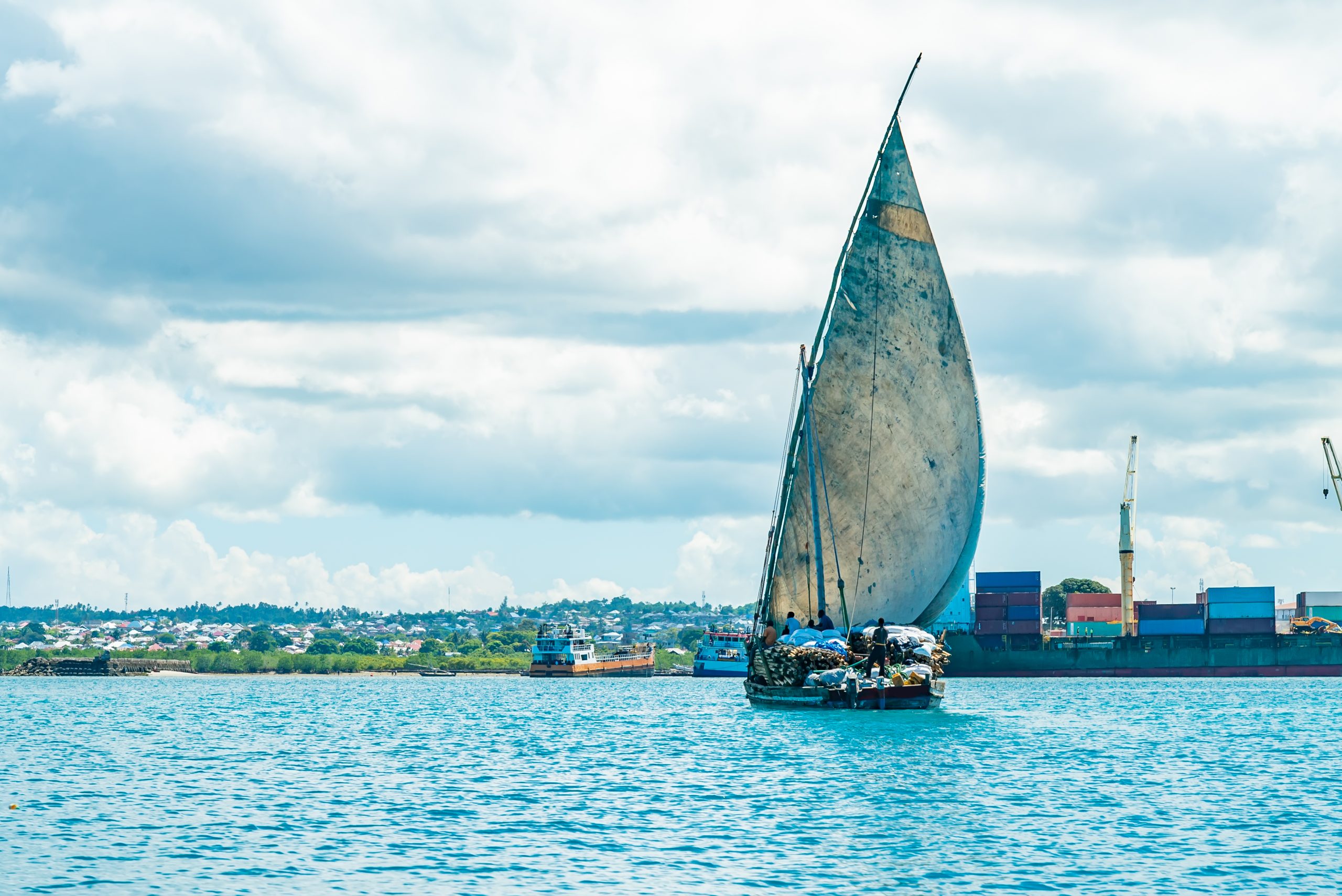Collaboration for sustainable tourism development and management is a well-covered topic among both academics and practitioners, and it is an essential ingredient in sustainable tourism planning[1]. Globally, tourism has been the victim and the vector of socioeconomic and environmental problems, with coastal destinations experiencing economic deprivation, environmental degradation or both[2]. From a socioeconomic perspective, job opportunities remain limited, low-paid and dominated by unskilled, seasonal employment, while overreliance on the tourism industry is the norm[3]. From an environmental perspective, climate change affects blue spaces, with coastal areas being impacted by rising sea levels, flooding and erosion[4]. This makes tourism extremely vulnerable to political, environmental, economic and health shocks such as the ongoing COVID-19 pandemic, with a devastating effect on historically fragile coastal destinations[5]. Building sustainability and resilience for blue spaces is vital, as they possess ecological, aesthetic and wellness values essential for tourism, as well as for their residents[6].
The UN Agenda 2030 for Sustainable Development and Sustainable Development Goal 17—Partnership for the Goals—highlight collaboration and partnerships as central tenets for a resilient and more sustainable future. In tourism, collaboration is essential to create beneficial partnerships, support livelihoods, protect cultural and environmental assets and develop tourism more responsibly[7].
Collaboration and partnerships are meant to leverage the sustainable development of tourism by engaging a vast range of stakeholders, such as agencies, organisations, businesses, academic institutions, special interest groups and community members with a diverse set of values and agendas. Although involving such a range of stakeholders in any planning process can be difficult and time-consuming, it may bring significant benefits for sustainability by increasing destination efficiency, equity and harmony[8]. This essay will look at three examples showcasing the importance of collaboration:
- Research and knowledge exchange: the COAST project
- Peer-to-peer teaching: the Peer2Peer Capacity Building initiative
- Community-based tourism enterprises: Turtle SOS, the Gambia
Sub-Saharan Africa includes 32 coastal states where unsustainable tourism practices have already irreparably damaged fragile ecosystems, leading to significant economic losses. In 2010, the UN Environment Programme, the Global Environmental Facility, the UN Industrial Development Organization and the World Tourism Organization worked together to develop the Collaborative Actions for Sustainable Tourism (COAST) initiative for the sub-Saharan coastline[9]. The COAST project was carried out by a consortium of experts from academia and industry, collaborating on a co-constructed research and knowledge-exchange project. The project involved capacity building for public-, private- and third-sector institutions in nine countries (Cameroon, the Gambia, Ghana, Kenya, Mozambique, Nigeria, Senegal, the Seychelles and Tanzania). It aimed at reducing the negative effects of coastal tourism and unlocking tourism’s potential contribution to coastal development throughout Africa. The project’s initial phase defined key challenges and barriers in each of the countries, delineating elements of the overall programme to address a range of training and capacity challenges, with specific attention to each country’s demonstration sites. Each of the nine country-specific needs assessments was designed to stand alone but followed a shared methodology and approach. In all nine countries, the lack of effective environmental management systems for the hotel and resort industry was identified as one of the COAST project’s three areas of focus, followed by ecotourism, broadly understood as encompassing environmental, economic and sociocultural planning and management of coastal tourism, characterised by host-community participation and enhanced local benefits. For the East African countries, reef conservation and protection emerged as a priority.
As part of the COAST consortium working in three of the nine COAST demonstrator projects, my team contributed research into ‘Best Available Practices/Technologies’ in Nigeria, the Gambia and Ghana. We identified training needs and government guidelines for ecotourism development. On this basis, COAST identified demonstrator sites and delivered, for example, targeted training and local initiatives in the Gambian coastal village of Kartong. This collaborative research enabled local stakeholders to articulate a vision for tourism development in their village and contributed to the community’s growing confidence in its future. The process was transformative on both sides, leading to direct and indirect support for local businesses and far-reaching social and economic benefits in the wider community.
Concurrently with the COAST Project, and since 2007, I facilitated the Peer2Peer (P2P) Capacity Building through Niche Tourism research and teaching initiative. The main value of the P2P initiative lies in its structured peer-to-peer collaborations among academic researchers, local practitioners, international students and local participants, who co-design niche tourism business opportunities and innovative community-based tourism enterprises. Peter Burns and I revealed the importance of collaboration through tourism network development and peer-to-peer capacity building aimed at workforce development and poverty alleviation in Africa[10]. Since its inception, the P2P initiative has played a pivotal role in advancing sustainable tourism practices and engaging low-income communities in coastal villages of southern Gambia. By 2020, 60 local community members (10 participants each year, over a six-year period) had benefitted from the P2P Capacity Building initiative, as a result of a close collaboration between the University of Brighton and the Sandele Foundation. Through product development training, community members acquired new knowledge, skills and values associated with sustainable tourism business planning, conservation and community development, leading members of low-income communities to launch 16 micro-initiatives and entrepreneurial start-ups.
A key outcome of the P2P initiative was the establishment of the first-ever community-based turtle conservation project in the Gambia, ‘Turtle SOS’, in response to devastating turtle poaching. The project resulted in direct paid employment to seven conservationists (including two former poachers) and engaged between 10 and 30 regular local volunteers. Turtle SOS has delivered educational programmes in seven schools in five low-income coastal communities, reaching approximately 5,000 3–14-year-old children and their families, engaging the wider community through film showings and presentations. In November 2015, we further collaborated on the strategic and practical development of the new Turtle Conservation and Interpretation Centre at Sandele, offering a unique small-scale but high-yield tourism attraction in the locality, attracting an average of 200 visitors per year.
Following from this experience, since 2018, I have led the implementation of the P2P initiative in Ghana, through a collaboration with globally renowned artist Serge Clottey, the La360 community-based arts festival team and a local youth group. This P2P intervention improved community living standards in the low-income coastal neighbourhood of La (Labadi) in Accra. It stimulated change in community members’ attitudes from passive bystanders witnessing the degradation of their urban and ocean environments, to active custodians of these environments. Through the P2P capacity-building workshops, 450 community members were incentivised to participate in beach and neighbourhood clean-up exercises, leading to changes in community understanding of the need for environmental sanitation and waste management. Community members also gained new understanding of how they can benefit from tourism and host-guest encounters.
The above collaborations have advanced workforce skills, generated innovative niche tourism products and benefitted six low-income coastal communities by also engaging 5,000 children and their families in turtle conservation in the Gambia and 450 community members in waste management at coastal sites in the La community of Accra.
While the COVID-19 crisis has posed unprecedented challenges, the post-pandemic recovery will provide opportunities for innovative investments in tourism[11]. Interventions that enhance the industry’s sustainability and resilience are indeed important[12], but today more than ever collaborative action that fosters the recovery and regeneration of coastal destinations is paramount.
—–
[1] B. Bramwell and B. Lane, “Sustainable Tourism: An Evolving Global Approach,” Journal of Sustainable Tourism 1, no. 1 (1993): 1–5; W.C. Gartner, Tourism Development: Principles, Processes and Policies (New York: Van Nostrand Reinhold, 1996); P.W. Williams, R.W. Penrose and S. Hawkes, “Shared Decision-Making in Tourism Land Use Planning,” Annals of Tourism Research 25, no. 4 (1998): 860–89; J. Liburd and D. Edwards, Collaboration for Sustainable Tourism Development (Oxford, UK: Goodfellow, 2018); UN Framework Convention on Climate Change (UNFCCC), Enhancing Resilience of Oceans, Coastal Areas and Ecosystems through Collaborative Partnerships (Bonn: Nairobi Work Programme, 2021).
[2] S. Agarwal, S. Jakes, S. Essex, S.J. Page and M. Mowforth, “Disadvantage in English Seaside Resorts: A Typology of Deprived Neighbourhoods,” Tourism Management 69 (2018): 440–59; UNFCCC, Enhancing Resilience of Oceans, Coastal Areas and Ecosystems.
[3] V. Della Corte, G. Del Gaudio, F. Sepe and S. Luongo, “Destination Resilience and Innovation for Advanced Sustainable Tourism Management: A Bibliometric Analysis,” Sustainability 13, no. 22 (2021): 12632.
[4] M.R. Phillips, A.L. Jones and T. Thomas, “Climate Change, Coastal Management and Acceptable Risk: Consequences for Tourism,” Journal of Coastal Research 85 (2018): 1411–15; M. Zsamboky, A. Fernández-Bilbao, D. Smith, J. Knight and J. Allan, “Impacts of Climate Change on Disadvantaged UK Coastal Communities,” Joseph Rowntree Foundation, 6 March 2011; D. Jarratt and N.J. Davies, “Planning for Climate Change Impacts: Coastal Tourism Destination Resilience Policies,” Tourism Planning & Development 17, no. 4 (2020): 423–40.
[5] N. Ntounis, C. Parker, H. Skinner, C. Steadman and G. Warnaby, “Tourism and Hospitality Industry Resilience during the COVID-19 Pandemic: Evidence from England,” Current Issues in Tourism, 13 February 2021, 1–14.
[6] Jarratt and Davies, “Planning for Climate Change Impacts”; A.M. Cisneros-Montemayor, M. Moreno-Báez, G. Reygondeau, W.W. Cheung, K.M. Crosman, P.C. González-Espinosa et al., “Enabling Conditions for an Equitable and Sustainable Blue Economy,” Nature 591, no. 7850 (2021): 396–401; S. Volker, J. Matros and T. Claben, “Determining Urban Open Spaces for Health-Related Appropriations: A Qualitative Analysis on the Significance of Blue Space,” Environmental Earth Sciences 75, no. 13 (2016): 1–18.
[7] Liburd and Edwards, Collaboration for Sustainable Tourism Development.
[8] D.J. Timothy, “Cooperative Tourism Planning in a Developing Destination,” Journal of Sustainable Tourism 6, no. 1 (1998): 52–68.
[9] E.W. Manning, “Collaborative Actions for Sustainable Tourism (COAST): Project Overview and Synthesis of Training Needs,” Tourisk, 2010, https://iwlearn.net/resolveuid/d4cd56a10bffe2e8cdbdcf583020828c.
[10] M. Novelli and P. Burns, “Peer-to-Peer (P2P) Capacity-Building in Tourism: Values and Experiences of Field-Based Education,” Development Southern Africa 27, no. 5 (2010): 741–56.
[11] A. Traskevich and M. Fontanari, “Tourism Potentials in Post-COVID19: The Concept of Destination Resilience for Advanced Sustainable Management in Tourism,” Tourism Planning & Development, 3 March 2021, 1–25.
[12] G.D. Sharma, A. Thomas and J. Paul, “Reviving Tourism Industry Post-COVID-19: A Resilience-Based Framework,” Tourism Management Perspectives 37 (January 2021): 100786.


 Previous
Previous


